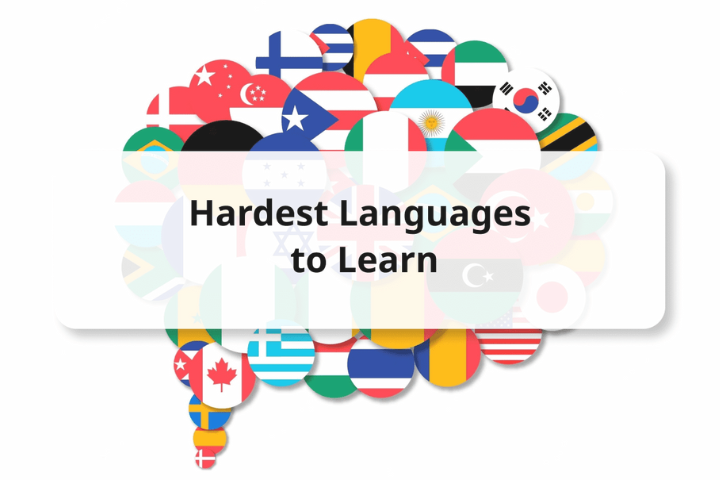The most difficult language to learn is a matter of opinion that is influenced by a number of variables, such as the learner’s native tongue, exposure to other languages, and individual learning preferences.
However, because of their distinctive characteristics, intricate grammar, or strange writing systems, several languages are frequently mentioned as being especially difficult.
Mandarin, Arabic, Japanese, and Hungarian are among the languages that are commonly cited as being among the hardest to master.
Most difficult language to learn
Mandarin
One of the most difficult languages for non-native speakers to master is generally Mandarin Chinese. Its tonal character is essentially the cause of the difficulty. There are four tones in Mandarin, and the tone in which a word is used can completely alter its meaning. As an example, depending on the tone, the syllable “ma” can indicate “mother,” “hemp,” “horse,” or “scold”. This is a major barrier because speakers of non-tonal languages are completely unfamiliar with this idea.
Mandarin employs a logographic writing system in addition to tones, in which each letter stands for a word or a significant portion of a word. There are thousands of these characters, and it takes a lot of time and work to become proficient with even the most widely used ones. In contrast to alphabetic writing systems, where mastering the alphabet enables one to read new words, every new word in Mandarin frequently necessitates mastering a new character, which can make writing and reading very challenging.
Arabic
Arabic is another language that is commonly cited as being extremely challenging for students, especially those whose mother languages employ the Latin alphabet. One of the most difficult aspects of learning Arabic is that it is written from right to left, which can be perplexing and difficult to adjust to. Additionally, the script is cursive, and the way letters are written varies depending on their position in a word.
Arabic also has a complicated grammar system, with a root-based structure that builds words from a base set of consonants. Understanding the roots and how they mix with various prefixes and suffixes is critical to learning the language, but it can be difficult for novices. Furthermore, Arabic has a complex system of verb conjugations, gender distinctions, and situations that make learning the language challenging.
Another problem is the presence of several dialects. Modern Standard Arabic is used in official settings, such as writing and the media, yet spoken Arabic varies widely by region. The Egyptian dialect, for example, differs significantly from the Moroccan dialect, and a learner may need to familiarize themselves with numerous dialects depending on where they intend to speak the language.
Japanese
Japanese is sometimes considered as one of the most difficult languages for English speakers to learn, owing to its writing system, which includes three distinct scripts: Kanji, Hiragana, and Katakana. Kanji, which is made up of characters taken from Chinese, is especially difficult because each character can have several meanings depending on the context. Hiragana and Katakana are syllabaries, with each sign representing a syllable, but learning all three letters at once can be stressful for students.
Japanese grammar provides additional challenges, particularly in the usage of particles, which are small words that express the function of a word inside a phrase. Japanese word order differs from English, with the verb often appearing at the end of the sentence. Furthermore, the language contains a complicated system of honorifics meant to indicate respect and social rank, which complicates learning Japanese.
Hungarian
Hungarian is one of the most difficult languages for native Indo-European speakers. It belongs to the Finno-Ugric language family, which implies it is unrelated to the majority of European languages. Hungarian grammar is famously complex, with 18 cases indicating the role of a word in a phrase. For example, instead of employing prepositions like “in” or “on,” Hungarian employs suffixes appended to nouns, which vary depending on the situation.
Furthermore, Hungarian vocabulary is mostly unknown to speakers of other European languages, making it difficult to acquire and recall new words. The language also has vowel harmony, which requires the vowels in a word to harmonize with one another, a concept that many learners are unfamiliar with.





GIPHY App Key not set. Please check settings